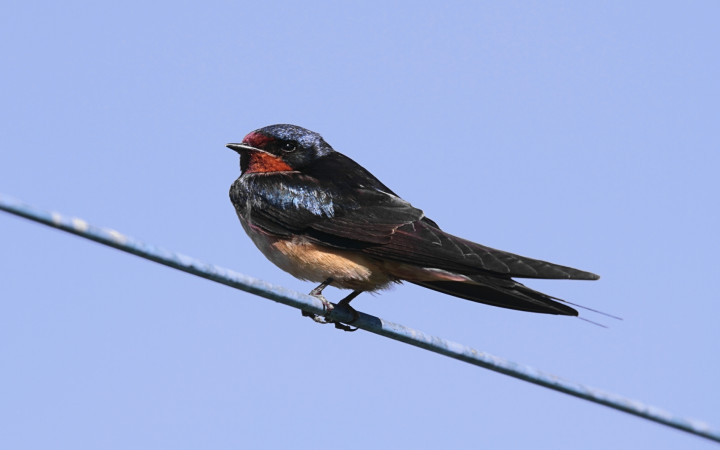Today’s Wonder of the Day was inspired by h from AL. h Wonders, “Why do birds not get shocked on alive conductor?” Thanks for WONDERing with us, h!
What do you know about the dangers of electricity? Odds are, you follow plenty of rules to keep from getting shocked. You don’t put your fingers into outlets. You don’t use plug-in appliances near water. You don’t climb utility poles.
You may have noticed, though, that animals don’t follow those rules! You’ve probably seen birds or squirrels running along electric lines. You may have even seen them sitting on the wires high up in the air. At times, these wires can be filled with dozens and even hundreds of birds.
Are they getting shocked while they sit there? They must not be, right? After all, you don’t hear any screeches or see puffs of smoke and feathers. There’s no smell of roasted bird in the air. So, what’s the deal? How can birds sit on those wires and not get shocked?
The answer to this question has to do with how electricity flows. It will always move along the path of least resistance and flows best through conductors. The copper in electrical wires is a great conductor. Birds are not good conductors. That’s one reason they don’t get shocked when they sit on electrical wires. The energy bypasses the birds and keeps flowing along the wire instead.
There’s another reason why birds can sit on a wire without getting shocked. There’s no voltage difference in a single wire. For electrons to move, there must be what scientists call a difference in electrical potential. For example, energy flows from areas of high voltage to areas of low voltage. If it flows through a single power line at 35,000 volts, it will continue along the path of least resistance. That means it’ll bypass birds because there’s no difference in electrical potential.
It would be a different story if a bird touched the ground while sitting on the wire. That would cause it to get shocked. This would also happen if a bird touched another wire with a different voltage. In these cases, the bird’s body would become a path for electricity. It would move through the bird to reach either the ground or another place with a different voltage. This is why power lines tend to be high in the air with plenty of space between the wires!
Standards: NGSS.LS3.A, NGSS.LS3.B, CCRA.L.3, CCRA.L.6, CCRA.R.1, CCRA.R.2, CCRA.R.4, CCRA.R.10, CCRA.SL.1, CCRA.SL.2, CCRA.W.2, CCRA.W.4, CCRA.L.1, CCRA.L.2




